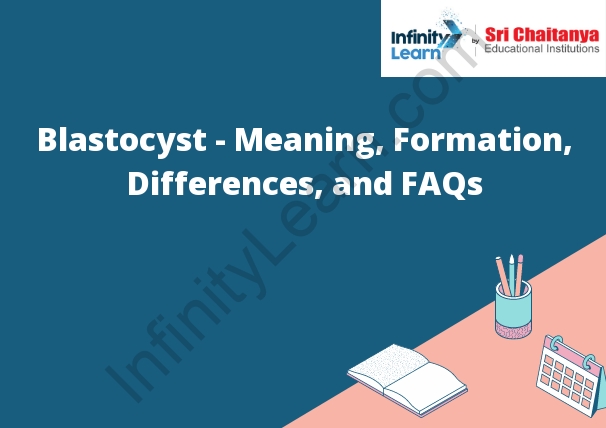Table of Contents
Blastocyst Definition
Blastocyst – Meaning:
A blastocyst is a stage in embryonic development that is reached after the morula stage. The blastocyst is a small, hollow sphere that is formed when the cells of the morula start to specialize. The cells of the blastocyst will eventually become the embryo, the placenta, and the membranes that surround the embryo. The blastocyst is initially surrounded by a group of cells called the trophoblast. The trophoblast will become the placenta.

Blastocyst Formation
- A blastocyst is a small, hollow sphere of cells that is formed during the early stages of embryonic development. It is formed when a fertilized egg splits into two cells, and these cells then divide again and again. The blastocyst contains a cluster of cells called the inner cell mass, which will eventually become the embryo, and a layer of cells called the trophoblast, which will become the placenta.
- The blastocyst begins to form about three days after fertilization. The cells that will become the embryo start to form a small ball inside the blastocyst. The cells that will become the placenta surround the embryo. The blastocyst continues to grow and develop until it is ready to implant in the uterus about six days after fertilization.
Blastocyst Vs Embryo
- A blastocyst and an embryo are both very young in their life cycle, but they are different in the way they are created. A blastocyst is a small, hollow ball of cells that is created five days after fertilization. An embryo is a larger, more developed ball of cells that is created eight days after fertilization.
- The blastocyst is created when the fertilized egg, or zygote, divides into two cells, and then those two cells divide into four cells, and so on. The embryo is created when the fertilized egg divides into two cells, and those two cells each divide into two cells. This process happens over and over again, creating a larger and more developed ball of cells.
- The blastocyst is created in the fallopian tube, and the embryo is created in the uterus. The blastocyst is small and doesn’t have a lot of features, but the embryo is larger and has a more developed body.
- The blastocyst is not as developed as the embryo, and it doesn’t have a heartbeat or any features other than the cells that make it up. The embryo is more developed and has a heartbeat, arms, legs, and other features.
- The blastocyst and the embryo are both important in the development of a baby, but they are different in the way they are created and in their development.
Similarities Between Blastocyst and Embryo
- There are many similarities between blastocysts and embryos. Both are formed during early embryonic development, and both contain cells that will go on to form the baby. Both blastocysts and embryos also have a yolk sac, which provides nutrients to the developing baby.
- The blastocyst and embryo are both stages in the development of a fetus. They are both formed from a fertilized egg, and they both contain the same genetic information. The blastocyst is the early stage of development, and the embryo is the later stage. The embryo contains more cells and is more developed than the blastocyst.
What is an Embryo?
- An embryo is a developing human organism in the earliest stages of life, from the time of conception until the end of the eighth week of gestation.
- An embryo is a human or animal in its earliest developmental stage, from the time of fertilization until the end of the eighth week of pregnancy.







